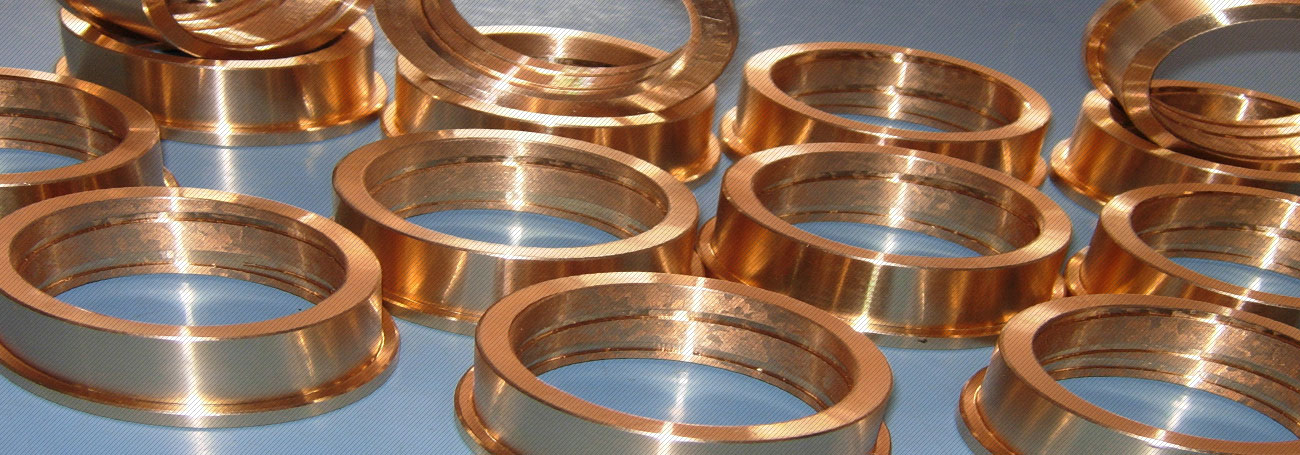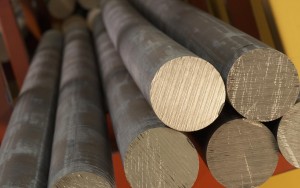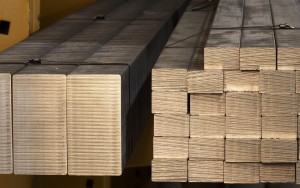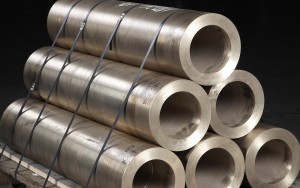Bronze
Bronze is an alloy consisting of copper and other metal, where the metal can be aluminium, nickel, beryllium or tin, although often the term bronze is understood as referring to a copper-tin alloy.
This alloy consisting mainly of copper is enriched with tin by up to 8-9%, resulting in alloys with good mechanical properties and high resistance to corrosion. These alloys continue to be plastically mouldable and can be cold-rolled, extruded, forged, moulded and drawn. Further increasing the content of tin will also increase the hardness. This means that the alloy can only be cast to produce so-called tin castings.
Bronze almost always contains other elements besides tin: The phosphorus deoxidises and increases the hardness; in phosphorus-based bronze, the content is 0.4-0.8%. Lead is added with a content between 1 to 5%.
It remains confined to the edges of the grains, thus making it easier to work with machine tools. If instead the lead reaches much higher percentages (from 10 to 30%), the alloy has a tendency to produce friction, which is why it is used in the production of bearings.
Zinc is used as a de-oxidant. Beryllium is added to increase hardness. Bronze is used for several applications, such as the production of gears and transmission components, bearings and bushings, and gear wheels that undergo high pressure.
Source: Wikipedia




